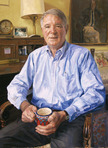William Peace's Blog, page 10
October 26, 2023
Review: Assyria: The Rise and Fall of the World’s First Empire
I ordered this book when it received some publicity in my alumni newsletter. I knew nothing about Assyria. My ancient history studies were confined to Greece, Rome and a bit about Egypt. it is written by Eckhart Frahm, who is professor of Assyriology in the Department of Eastern Languages and Civilizations at Yale. One of the world’s foremost experts on the Assyrian Empire, he is the author or coauthor of six books on Mesopotamian history and culture. He lives in New Haven, Connecticut.
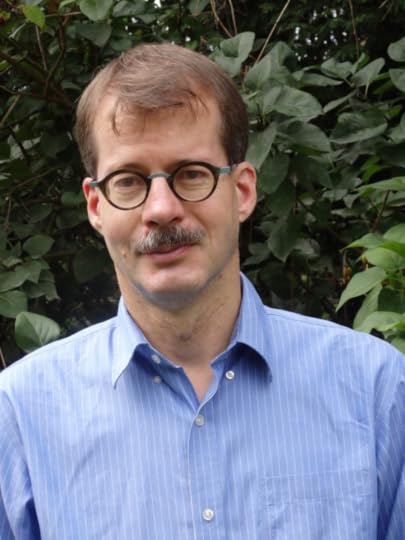
Professor Eckhart Frahm
When this book arrived, I found that it was 420 pages long with 8 pages of colour photographs and 5 pages of maps. In addition, there are 55 pages of footnotes and a 20 page index. I thought, how am I going to get through this. I haven’t read a history book in about 70 years. But I soon found that Professor Frahm’s enthusiasm for his subject is quite infections. The book is written in the tone of a mystery which has been solved.
Professor Frahm divides the history of Assyria into three periods. The Old Assyrian period beginning is about 2000 BCE after the town of Ashur (in what is now Iraq) and its god of the same name became politically independent. At that time it was ruled by a popular assembly and a dynasty of hereditary leaders. In about 1700 BCE, Ashur went into a period of decline which lasted until the 14th century when Ashur got back on its feet and became a territorial state eager to expand by military means. This marked the beginning of the Middle Assyrian period. Assyria was now a full-fledged monarchy and began to see itself as equal to Babylonia and Egypt. In about 1100 BCE, Assyria suffered a number of set-backs including climate change, migration and internal tensions. The Neo-Assyrian period began in 934 BCE when a series of ruthless and competent kings took over the Assyrian throne. In 671 BCE, King Esarhaddon and his army conquered Egypt. This made Assyria a fully fledged empire including northeast Africa, the eastern Mediterranean, stretching east into western Iran, north to Anatolia and south to the Persian Gulf. But only half a century after Esarhaddon’s rule, Assyria collapsed and Ninevah, its capital, was destroyed by Babylonia.
This story is, of course, very much dependent on archaeological finds, and in particular, on thousands of clay cuneiform tablets which tell the details of what took place. These can be compared to what is contained in the Hebrew Bible. The cuneiform tablets deal with everything from the economic details to who was appointed the king’s cup bearer. There are records of nearly every Assyrian king over a period of nearly two thousand years. The culture, politics, economics and trade, agriculture, the military capabilities, the vassal states, the languages, literature and arts, as well as the daily life of ordinary people are covered. The Assyrian political model became a guide for the Babylonian and Persian Empires which followed. There is also a discussion about the damage done to monuments and artifacts by ISIS.
For me, the only short coming about the book is the maps, which do not relate the ancient cities to modern geography.
Assyria is a fascinating and enlightening read.
October 21, 2023
Spice Not Smut
There’s a post by Ciera Horton McElroy on the Writer’s Digest website, dated 9 February 2023, in which she argues that it makes better fiction when the writer uses spice rather than smut. She goes on to describe how to write spicy fiction.

Ciera Horton McElroy
Ciera Horton McElroy (b. 1995) was raised in Orlando, Florida. She holds a BA from Wheaton College and an MFA from the University of Central Florida. Her work has appeared in AGNI, Bridge Eight, Iron Horse Literary Review, the Crab Orchard Review, and Saw Palm, among others. She currently lives in St. Louis with her husband and son. Atomic Family is her debut novel.
Ciera says,”I was shocked when my undergraduate professor said, ‘Christians write the best sex scenes.’. Seriously? How? I wasn’t the only one surprised. The other writers in the senior class at our Christian college snickered and exchanged glances.
“No, really,” she insisted, taking in our unconvinced faces. “Because Christians understand one important thing when it comes to writing about sex. Restraint.”
She went on to explain that writing about sex is also not writing about sex. Meaning, we need to write about the ache, the desire, the struggle to control one’s impulses.
I remembered this piece of advice many years later. Because when it came time to add some scenes to my novel Atomic Family that were a little … well, spicy … restraint was the magic word.
Writing about sex can be challenging for so many reasons. How much do we need to describe? How technical do we need to be? How do we forget, while writing, that our parents and friends will likely read this?
You get the picture.
What I’ve discovered in my writing is that there’s an important distinction between spice and smut—and that spice is often more interesting and character-driven for fiction than the latter.
In fiction writing, smut means sexually explicit or even pornographic material. Think Fifty Shades of Grey. Erotic novels are their own genre with their own devoted reader—but as with anything, they’re not for everyone.
What I’ve discovered as a historical fiction author is that you can have spice in a scene that doesn’t even have physical contact. All you need is desire. If we know a character’s desire and attraction, then we can feel the longing and passion along with them—and all of that can be fully, emotionally, and even physically realized without having content that is overtly graphic and descriptive.
Think about how much was accomplished in the Keira Knightley version of Pride and Prejudice when Elizabeth and Mr. Darcy accidentally touch hands. Hot. If the setting is clear and the tension is established, the smallest moments can be imbued with burning desire.
By varying your sentence structure, you can accomplish a lot in terms of showing desire. Ian McEwan is a master of using literary devices to show sexual desire and intimacy. Take his landmark novel Atonement. We’re going to look at the library scene. (Yep, that scene.)
‘He tilted her face up, and trapping her against his ribs, kissed her eyes and parted her lips with his tongue … At last they were strangers, their pasts were forgotten. They were also strangers to themselves who had forgotten who or where they were. The library door was thick and none of the ordinary sounds that might have reminded them, might have held them back, could reach them. They were beyond the present, outside time, with no memories and no future. There was nothing but obliterating sensation, thrilling and swelling, and the sound of fabric on fabric and skin on fabric as their limbs slid across each other in this restless, sensuous wrestling.’
There’s such lyrical beauty in this paragraph. Notice the short phrases, the breathiness to the prose. As their passion is heating up, the sentences become both longer and choppier. The syntax itself shows not only desire but escalation. This is a great tool to have in your back pocket when it comes to writing scenes with sexual tension.
This may sound counter-intuitive, but sometimes distancing a character from his or her body has a heightening effect when writing about sex. Lauren Groff often includes innovative sex scenes in her work—innovative in that they are distinctly character-driven. Usually, the scenes are meant to show what’s happening internally in a character’s psyche, as well as what’s obviously happening with the body. Take this scene from Groff’s early novel Arcadia.
‘She pressed down again, her body against his chest, and at last her mouth found his. He imagined the quiet street outside shining in the lights, the millions of souls warm and listening to the rain in their beds. He couldn’t stop looking at the side of her face, her eyes closed, the small shell of her ear, the scar in her nostril where the stud had been, her thin pale lower lip in her teeth. He was close but held off, until at last she whispered, Go.’
Notice how the narrative starts with the physical: We’re clearly tuned in to what’s happening. Then, we pan back out. He is imagining the quiet street, the lights, the people around them in the beautiful world. And then he’s back, but his focus is on all the bodily details that seem, honestly, very un-sexual. The side of her face. The shell of her ear. A scar on her nostril. I find that this “zoom-out and zoom-in” technique heightens the intimacy in the scene, especially as he’s noticing delicate and easily overlooked physical details of his partner. But doesn’t that feel so human?
Sometimes all you need is a little more conflict to help raise the heat.
In my novel Atomic Family, Dean wrestles with whether or not to cheat on his wife with a young woman named April, who works with him at the nuclear plant. His desire comes to a fever pitch at a very inopportune time … at work. During a smoke break. When a colleague could find them at any moment. After struggling to restrain himself, Dean can’t resist kissing April. I used interjectory thoughts from Dean to escalate his desire, showing his intense and urgent need to find privacy—now.
‘With one hand, he cups her breast outside the sweater. He can feel the boned bra and the whirlpool lace through cashmere. My office, he thinks. My car. They could slip away for an hour—no one would miss them. A storage closet. The locker room. He would be fast, so fast! It’s been so long! A sampling trailer. The stairwell.‘
Notice how he’s negotiating with himself. This is the character-driven restraint as he’s battling with his own desire. Of course, the text doesn’t need to specify exactly what would happen in the office or his car. The reader knows. It’s pretty obvious what he wants.
Note, too, that desire feels more urgent when the setting is awkward or uncomfortable or there is some circumstantial reason why the lovers don’t want to be caught. Ian McEwan accomplishes something similar in Atonement with the note that the two lovers block out the sounds that might have drawn them back to reality—because, as we know, someone could find them. And does.
If you have a strong sense of your character, then writing about desire should naturally flow from the character’s internal struggles and desires. We don’t have to get technical to know what’s going on. We just have to know what it means to the person on the page … and by using things like syntax and setting and tension, you can turn up the heat in your fiction while still maintaining a sense of mystery.”
October 15, 2023
Character Development
Mahsuda Snaith has an interesting article dated 14 August 2022 on The Novelry website. She offers three character development exercises to help us develop interesting, believable, complex characters.
Mahsuda Snaith was an Observer New Face of Fiction in 2017. She has published two celebrated novels, The Things We Thought We Knew and How to Find Home, the second of which was a BBC Radio 4 ‘Book at Bedtime’. Mahsuda is especially interested in folklore and fairy tales, and representing voices from all backgrounds. She is a writing coach at The Novelry.
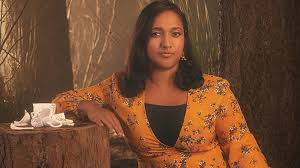
Mahsuda Snaith
Mahsuda says, “Years ago, when I was learning the craft of writing, I would sit in public spaces and people-watch. I needed to create characters who were distinct and different from each other, so I gave myself the task of seeing what was distinct and different about those around me.
I sat on park benches and in town hall squares, watching people walk past then noting down the most interesting details about them. I may have only seen a person for a few seconds, but I could always note down something distinctive – how quickly they were walking, how they dressed, their body language.
A person strolling by in a tailored suit and a briefcase with perfect posture told me something very different about their character than a person in the same tailored suit dashing by with a dozen papers in their hands, head down and shoulders hunched forward as they bumped clumsily into people along the way.
To help you see your characters with the same fresh eyes, as though they’d just walked by, try the following exercise.
Broken Glass
Not only is this a good exercise in understanding your character better but, as a bonus, it’s also a great exercise in ‘show don’t tell’. You’ll end up with great characters and a more engaging writing style!
The Bedroom Exercise
This one is fun, speedy and simple! Just put 10 minutes on a timer and write about the items in your protagonist’s bedroom, particularly focusing on the unusual.
A desk in itself is not particularly telling, but a desk with a broken leg propped up by CDs gives away your character’s interests, personality and, in this case, perhaps even their age. There may be moth holes in the curtains, cat posters on the wall or an immaculate display of dolls kept in their original boxes. And if there’s little to nothing in your character’s room, this can tell us something too. An open suitcase with only a few items, a mattress on the floor with no bed frame, bare walls and windowsills, are all signs of what your character’s life is really like.
So you can see how this character exercise is so powerful: it gives an insight into the intimate life of your protagonist that they wouldn’t necessarily show to the rest of the world.
Once you’ve done this with your protagonist, try it out with other characters. Seeing the differences between the main players’ bedrooms could be incredibly revealing and also highlight the conflicts and dynamics between characters in your novel.
Interview Your Characters
You’ve observed your character from a distance and you’ve snooped in their bedrooms; now it’s time to get up close and personal.
There have been times when I’ve not been able to connect with one character in my story. In those moments, I always find it helpful to ask them questions. Not about their hair colour or what their door number is, but the deep questions you would probably not even ask your closest friends. Questions you would probably not even ask yourself.
Put a timer on for 10 minutes and answer these questions for one of your characters.
The timer is important because I don’t want you to ponder over the answers for too long but to write them intuitively.
You may not think you know your characters very well, but it’s amazing what the subconscious reveals when you have the pressure of a timer.
Got your writing equipment ready? Let’s go.
Who is this? (Keep it brief; name, age or whatever immediately comes to mind.)What do they carry?Where do they go?What are they afraid of?What do they believe?Who has hurt them?What do they hope will happen?What happens?When you’ve finished answering these questions, let those answers sink in and think about how they might affect your novel. You might have new information about your characters that will shape their motivations and how they behave.
Out of all these questions, what your character fears can be the most revealing.
How does their fear stop them from getting what they want?How can your character overcome their fear?And if they can’t overcome it, how can their fear ruin everything they could possibly want?There’s often a misconception that you need likeable characters in a novel for your readers to invest in them. I’ve read many novels where the characters, including the main characters, are distinctly unlikeable and – in most cases – this is deliberate.
What is more important than likability is believably. If you create a character that has nuance and layers, who is driven by their fears and obsessions just like real people, then readers will be far more invested in them than if they are picture-perfect cut-outs of what we think a hero looks like.”
October 5, 2023
Review: How to Slay a Dragon
I saw some publicity about this book before it was published, and I ordered it. The dragon in the title refers to Vladimir Putin and the Kremlin, generally, and the author is Mikhail Khordorkovsky, who is a Russian oligarch who spent ten years in prison for criticising Putin. I decided it had to be a good read.
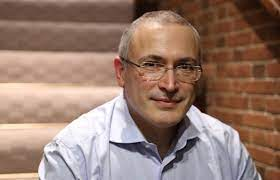
Mikhail Khordorkovsky
Khordorkovsky was born in Moscow in 1963 to a Jewish father and an Orthodox Christian mother, both his parents were engineers. He graduated with a degree in chemical engineering in 1986. As a young man, he was a fervent patriot, a committed communist and well introduced in the Soviet apparatus. In 1988 he founded a private bank and was a financial advisor to Boris Yeltsin. In the early 1990’s, he took advantage of runaway inflation to make a fortune in currency trading. In the mid 1990’s he bought 78% of the shares of Yukos, an oil conglomerate for 318 million dollars. (The shares were worth 5 billion dollars.) By 2003, the shares were worth $16 billion, and Khordorkovsky was the richest man in Russia. That same year, during a television appearance with Putin, he criticised the endemic corruption in Russia. He was then arrested for tax fraud and in 2005 he was sentenced to nine years in prison. Meanwhile, Yukos lost most of its value and was acquired by Rosneft, a state-owned company. In 2010, he was convicted of embezzlement and money laundering and his sentence was extended to 2017. Most independent observers, including Amnesty International, consider Khordorkovsky to be a prisoner of conscience.In prison he wrote of the need to “turn left” and adopt more liberal views in Russian governance, and he engaged in several hunger strikes for the benefit of fellow celebrity prisoners. In July 2014, the Permanent Court of Arbitration in The Hague ruled that the Russian government deliberately bankrupted Yukos to seize its assets and ordered it to reimburse Yukos shareholders a sum of approximately $50 billion. No such payments have been made. On 20 September 2014, Khodorkovsky officially relaunched the Open Russia movement , with a live teleconference broadcast with pro-democracy opposition and civil society activist groups in several Russian cities. According to media reports around the time of the launch, Open Russia was intended to unite pro-European Russians in an attempt to challenge Putin’s grip on power. Khodorkovsky said the organization would promote independent media, political education, the rule of law, support for activists and journalists, free and fair elections and a program to reform Russia’s law enforcement and justice system. He has also said that the power should be shifted from Putin to parliament and the judiciary. He lives in London.
In How to Slay a Dragon, Khodorkovsky does not really address his ‘How to’ question except to suggest that it may happen from peaceful protest or uprising, what he calls a ‘revolution’. He is also vague about any role he might have in a future Russian government; he insists that he just wants to argue the case for a European style government in Russia. Nonetheless, it is clear that one doesn’t write a book as clear, comprehensive and as well argued at this one without having political ambitions. If it were up to me, I would put him in a high office. The strength of this book lies in the thoroughness of its coverage of the possibilities of government: empire vs nation state; superpower vs national interest; democracy vs autocracy; monopoly vs competition; how much freedom of speech; left or right inclination; justice vs mercy; parliamentary vs presidential republic. Khodorkovsky comes down on the liberal side of the available choices, and he is clear that Putin must go, Russia must change and victory should belong to Ukraine. The author makes these choices based on what is best for Russia, and he argues each case from the perspective of how the Russian culture is now, how it was historically, and how it should be for Russia’s and the world’s benefit. His knowledge of the details of Russian history is impressive. A very good read.
September 17, 2023
Endings
There was an interesting email the other day from Harry Bingham of Jericho Writers.
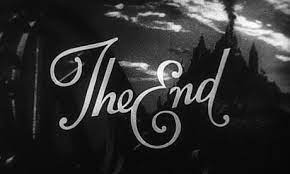
Harry said, “Beginnings are important. If you don’t get your reader onto the story-train in that opening chapter, you’ve basically lost the game before it’s really started.
And also: if you don’t set expectations just so in those opening pages, you’re likely to confuse your reader or upset them later in the book – another way to lose the game.
But endings matter too. To a huge extent, they set an architecture for the whole book. They determine the way you understand it.
Endings matter at least as much as beginnings and the reason I don’t talk about them much is simply that endings mostly write themselves.
I don’t know about your experience, but my endings generally pass in a rush. It’s as though the entirety of the preceding novel is there to allow me to write the final chunk in a blaze of understanding and joy.
The understanding is: I know my characters. I know how all my little plot intricacies need to play out. I know what the grand finale needs to deliver. The prior 90,000 words involved me figuring those things out. The last 20,000 are my reward.
The joy is partly the ease of writing. But it’s also the joy of completing the arc. It’s like writing one long punchline, where you already know that the joke is going to land. I’ve certainly had some spectacularly happy writing sessions that haven’t involved endings. But mostly – the writing sessions I remember with most pleasure involve endings. Words flowing and the text satisfying.
So maybe you don’t need help with the endings. I think there’s an argument that if the preceding story has worked properly, the ending should just fall into place. But here, for what it’s worth, is a checklist to keep at hand …
Exterior drama
Have you properly completed your exterior drama? In the kind of books I write, that’ll typically involve some good splash of violence – a sinking boat, a fight, a burning building. But that’s not necessary. In Pride and Prejudice, the exterior ‘drama’ involves a naïve girl eloping with Mr Wrong and the Romantic Hero doing (off-screen) what Romantic Heroes are there to do. The off-screen quality of that drama is probably a little underweight for a modern audience, but so long as you have some dramatic action that’s well suited to your genre and readership, you’re fine.
Interior drama
The flipside of the exterior action needs to be some serious internal pressure. In a standalone novel, that pressure needs to have the sense of being pivotal – life-altering, life-defining. In a series novel, you can’t quite get away with a new life-defining moment with every installment, but the stakes still need to be high. Series characters take a bit of a battering as a result.
Most books, not all, will involve a romantic relationship. And – of course – the pressures of your grand finale are also pressures that test and define that relationship. You definitely don’t have to kiss and get married at the end of every book. I’ve ended a book with my protagonist ending what had seemed like a strong and constructive relationship. But when your character enters the furnaces of your ending, everything is tested, everything will either prove itself durable or fallible. The relationship can’t simply be as it was before. (Again, series characters need to play those things differently, but ‘differently’ doesn’t mean you can just ignore the issue.)
Other key friendships / relationships
Of course, there are a ton of other relationships that build up over the course of a book. Those might be best-friend type relationships, or children, or parents. They can (importantly) be office colleagues, which sounds dull but they can matter too. My detective’s relationship with her boss and other colleagues is just quite central to the architecture of her life and the books. These relationships too don’t need profound alteration necessarily, but they need some token of ending. A boss hugging your character (when he/she never normally would), or talking about a promotion, or offering a holiday – those things sound trivial, but they can define something important about everyone’s relationship to what has just happened. You don’t necessarily need much here. Half a page? A page? That might be ample. But if you book misses that page, it’ll never quite satisfy as it ought to.
Mystery resolution
Most books – not just crime novels – will often have some kind of mystery at the heart. That mystery will probably be unfolded in your grand action-climax, but that won’t always be true. Modern fiction has (rightly) moved away from that moustache-twirling final chapter where the Great Detective reveals the mystery to a completely static audience. But it’ll often be the case that little questions and niggles remain. Those things need to be addressed. It’s even OK if they’re addressed by saying, “We’ll never know exactly how / why / who X.” But you need to resolve your mysteries or acknowledge that you haven’t.
Movement
And, since we’ve just dissed static and moustache-twirling final chapters, I’d add that maintaining some kind of motion still matters at the end. Just as you’ll want to move settings fairly frequently in your middle chapters, I think you’ll want to do the same at the end. Physical motion is still a good way to convey story motion.
The closing shot
And –
There’s a theory in film-structure that the opening shot should show the ‘Before’ state of a character and the closing shot should show the ‘After’ – where the before/after vignettes somehow encapsulate the alteration brought about by the story. So to take the (vastly excellent) Miss Congeniality movie, the opening shot shows Sandra Bullock as goofy, unkempt, and without close female friends. The closing shot shows her kempt, still her, but now with close female friends. That’s the key transition in the movie.
I don’t quite like the mechanical nature of these movie plotting guides, but I do think it’s worth reflecting on the closing shot. What are you wanting to show? What’s the image of your character that you want to leave with your reader? In one of my books, a girl had been long separated from her father. Fiona’s last act in the book is to rejoin the two. She’s not physically present when the two meet – she’s set up the meeting, but remains in a car outside, watching. And that maybe is just the right tone for the book. Fiona plays this almost Christ-like role – suffering for others, undoing wrongs – but nevertheless remains on the outside of ordinary human society. That point isn’t made in any direct way, but it doesn’t have to be. An indirect point lingers longer than one made more crudely.”
September 7, 2023
Review: Truth to Power: My Three Years Inside Eskom
Eskom used to be a customer of mine when I worked for Westinghouse in the 1970’s. I took several trips to South Africa, but never got any business. Retrospectively, possibly because Westinghouse didn’t pay bribes. Eskom’s current severe load shedding attracted me to this book by André de Ruyter, the CEO of Eskom during the three year period 2020 -2022.

André de Ruyter must have written this book in a hurry. He resigned as CEO of Eskom in late February this year, and the book was distributed in late August. That’s six months to strike a deal with the publisher, Penguin, write the book, have it edited, publicised and published. At just over 300 pages it is filled with facts that he would have had to look up. As most novels have a ‘gestation time’ of at least a year, it is a remarkable feat to publish this book in six months.
de Ruyter got the top job at Eskom in January 2020. He says that 28 presumably qualified black candidates turned down the job. This gives an indication of how tough the job was. Eskom was shedding load regularly, deeply in debt, owned by the South African state, subject to political manipulations, and racked by corruption. de Ruyter says he took the job because it represented a challenge, and out of patriotism to South Africa and not for the low compensation.
In the book, de Ruyter describes the difficulties he faced as CEO:
Eskom had no reserve generating capacity, owing to years of indecision by the government. Government regulation made it impossible for privately owned generation to enter the market. The government wanted 100% control of the electric power market.Eskom’s tariffs were below cost, and the government resisted efforts to raise tariffs, on the basis that cheap energy was desirable, but this only led to a huge debt mountain.Municipalities did not pay the bills for power delivered to them. They had to be taken to court.The government was biased in favor of coal fuel. This made it difficult to plan for renewables for power generation. Moreover, the quality of available coal was deteriorating, contributing to maintenance and output problems.Corruption was rife in the purchasing of coal fuel oil and goods. A major, privately funded investigation found that senior ANC members were involved in corruption.Local police did not co-operate in the prosecution of criminal employeesViolent threats were made against whistle blowers, including the CEO who had to have body guards.The CEO was served a cup of coffee that had been laced with cyanideThe skills base was badly eroded. Regulations made it difficult to re-hire skilled white workers and difficult also to dismiss under performing black workers.The average age of the power stations was more than forty years, and they had not been subject to routine maintenanceRegulations made it difficult to obtain OEM spare parts directly. This opened the possibilities of corruptionSabotage of operating plant for political ends was not uncommon.In spite of these challenges, de Ruyter did accomplish quite a lot:
a plan to transition to a low carbon future with privately- and Eskom-owned renewable generationa culture change in Eskom: loyalty, accountability, and values basedthe division of Eskom into three entities: generation, transmission and distributionde Ruyter resigned when a new chairman was appointed with a brief to run a ‘hands on’ board. This led to management being undermined and second-guessed by amateurs at every turn. Unfortunately, that chairman is still in place.
This book will have caused consternation within the ANC. There are many specific accounts of named government leaders taking decisions and actions which are contrary to the interests of the country.
I have two criticisms of this book. First, it is not well organised. Topics and the timeline are frequently switched around. The whole story still gets told, but in a somewhat disjointed way. Second, de Ruyter lectures the reader frequently about why his management style and techniques are right. They are right, but the average reader will not need the lecture.
This book is a very valuable piece of work. It exposes the inherent weaknesses of a naive, Marxist-oriented government, shows the risks in government ownership of business, and makes the undoubtable case for competent, modern management.
August 26, 2023
Reconsidered: Jack Kerouac
Left without a new book I had ordered but which had not arrived, I went to our bookshelves, to find something to read in the meantime. I selected On the Road by Jack Kerouac, which I had read and reviewed on this blog in October 2020. I have now read it again, and I think I enjoyed it more this time.
Rather than re-review it, I’m going to share some of the research I have done on the book and its author.
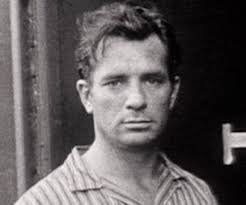
Jack Kerouac
Jean-Louis Lebris de Kerouac was born in 1922 in Lowell, Mass to an immigrant French-Canadian family. His mother tongue was French and it took him some time to become fluent in English. He was brought up in a strict Roman Catholic environment. His father’s business was not successful, he drank heavily, and the family was short of money. However, young Jack was a good student, who excelled at football and he won a scholarship to Columbia University. At Columbia, he met the poet Allan Ginsberg (1926-1997) who would become the character Carlo Marx in On the Road, and the writer William S Burroughs (1914-1997) who would become the character Old Bull Lee. He also met Neal Cassaday, a wildly-driven intellectual who would become the central figure, Dean Moriarity in On the Road. These four men became the founders of the Beat Generation which loved bebop music, alcohol, drugs, sex and wild experiences. Kerouac greatly admired Neal Cassady for his total lack of inhibitions, his enthusiasm, his great spirit of adventure, his love of women, risk and fast cars, idealized him and considered him a hero.
Kerouac dropped out of Columbia when his football career ended. He joined the merchant marine in 1942 and wrote The Sea Is My Brother which was published in 2011, forty years after his death. For a short time he was in the US Navy reserve, but was discharged honorably on psychological grounds (a diagnosis of schizoid personality).
In 1947, Kerouac and Cassady embarked on a cross-country trip, after which the writer completed Town and the City which included the details of his daily life and was published in 1950 having had 400 pages edited out. In 1949 he began work on On the Road. In its original form, Kerouac typed it on a continuous sheet of paper 120 feet long, during 22 days in April 1950, relying on copious notes. Though the book was written quickly, it was not well received by publishers who objected to its sexual content (including homosexuality), drug use and its experimental writing style. According to Kerouac, On the Road “was really a story about two Catholic buddies roaming the country in search of God. And we found him.” According to his biographer, historian Douglas Brinkley, On the Road has been misinterpreted as a tale of companions out looking for kicks, but the most important thing to comprehend is that Kerouac was an American Catholic author – for example, virtually every page of his diary bore a sketch of a crucifix, a prayer, or an appeal to Christ to be forgiven.
For the next several years Kerouac continued writing and traveling, taking long trips through the U.S. and Mexico. He often experienced episodes of heavy drinking and depression. During this period, he finished drafts of what became ten more novels, including The Subterraneans , Doctor Sax, Tristessa and Desolation Angels, which chronicle many of the events of these years.
In 1954 Kerouac discovered The Buddhist Bible in the San Jose library; this was the beginning of his interest in eastern religion and philosophy, of which The Dharma Bums is an example.
Wikipedia says, “Kerouac found enemies on both sides of the political spectrum, the right disdaining his association with drugs and sexual libertinism and the left contemptuous of his anti-communism and Catholicism; characteristically, he watched the 1954 Senate McCarthy smoking marijuana and rooting for the anti-communist crusader, Senator Joseph McCarthy.” and “Kerouac’s novel is often described as the defining work of the post-World War II Beat Generation and Kerouac came to be called “the king of the beat generation,” a term with which he never felt comfortable. He once observed, “I’m not a beatnik. I’m a Catholic”, showing the reporter a painting of Pope Paul VI and saying, “You know who painted that? Me.” (Kerouac was, in fact a portrait painter, having painted Joan Crawford, Truman Capote, Dody Muller and even Cardinal Montini.)
On October 20, 1969, Kerouac vomited blood and was taken to the hospital in St Petersburg, Florida, where he was found to have an esophageal hemorrhage. He was given transfusions and an operation, but cirrhosis of the liver would not allow his blood to clot, and he never regained consciousness. At the time of his death, he was living with his third wife, Stella Sampas Kerouac, and his mother, Gabrielle. Kerouac’s mother inherited most of his estate.
Jack Kerouac was clearly a man in fraught search of himself. There are many conflicts in his character. But even if we set aside the subjects of his novels because we are unsure of the rationale, one has to admit that his characterisations, his descriptions of scenes, and the urgency of his writing are brilliant.
August 21, 2023
“Write Evert Day” – Bad Advice
On Cal Newport’s blog, he has a post about writing every day. He says,”If you’ve ever considered professional writing, you’ve heard this advice. Stephen King recommends it in his instructional memoir, On Writing (he follows a strict diet of 1,000 words a day, six days a week). Anne Lamott proposes something similar in her guide, Bird by Bird (she recommends sitting down to write at roughly the same time every day).
Having published four books myself here’s my opinion: If you’re not a full time writer (like King and Lamott), this is terrible advice. This strategy will, in fact, reduce the probability that you finish your writing project.”
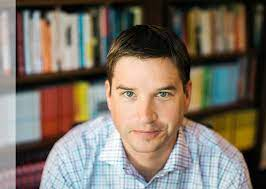
Cal Newport
Cal launched the “Study Hacks” blog at calnewport.com in 2007, and has been regularly publishing essays here ever since. Over 2,000,000 people a year visit this site to read Cal’s weekly posts about technology, productivity, and the quest to live and work deeply in an increasingly distracted world.
“Here’s what happens when you resolve to write every day: you soon slip up.
If you’re not a full-time writer, this is essentially unavoidable. An early meeting at work, a back-up on the subway, an afternoon meeting that runs long — any number of common events will render writing impractical on some days.
This slip-up, however, has big consequences.
It provides evidence to your brain that your plan to write every day will not succeed. As I’ve argued before, the human brain is driven, in large part, by its need to assess plans: providing motivation to act on good plans, and reducing motivation (which we experience as procrastination) to act on flawed plans.
The problem for the would-be writer is that the brain does not necessarily distinguish between your vague and abstract goal, to write a novel, and the accompanying specific plan, to write every day, which you’re using to accomplish this goal.
When the specific plan fails, the resulting lack of motivation infects the general goal as well, and your writing project flounders.
In my experience as a writer with a day job, I’ve found it’s crucial to avoid rigid writing schedules. I don’t want to provide my brain any examples of a strategy related to my writing that’s failing.
When I’m working on a book, I instead approach each week as its own scheduling challenge. I work with the reality of my life that week to squeeze in as much writing as I can get away with, in the most practical manner. Sometimes, this might lead to stretches where I write every morning. But there are other periods where I might balance a busy start to the work week with half days of writing at the end, and so on.
The point is that I commit to plans that I know can succeed, and by doing so, I keep my brain’s motivation centers on board with the project.
This approach, of course, brings up the question of motivation. Most people who embrace the daily writing strategy do so because they worry their will to do the work will diminish without a fixed system to force progress.
This understanding is flawed.
You can’t force your brain to generate motivation. It will do so only when it believes in both your goal and your plan for accomplishing the goal.
If you find that you’re still failing to get work done, even when you’re more flexible with your scheduling, the problem is not your productivity, it’s instead that your mind is not yet sold that you know how to succeed with your general goal of becoming a writer.
In this case, abandon National Novel Writing Month (which I think trivializes the long process of developing writing craft) and go research how people in your desired genre actually develop successful careers. Your mind requires a reality-based understanding of your goal in addition to achievable short-term plans.
I recalled this lesson recently in an unrelated part of my life. One of my interests over the past few months has been trying to increase the amount of time I spend engaged in deep work related to my academic research.
In December, I tested a rigid strategy that was, in hindsight, just as doomed to failure as attempting to write every day. I had a particular paper that I wanted to complete in time for a winter deadline. I told myself that the key is to start every weekday with deep work. If I commuted on the subway, I would work in a notebook while traveling. If I drove, I would knock off a batch at home while waiting for rush hour to end.
I believed this rigid schedule would help make deep work an ingrained habit, and the paper would get done with time to spare.
It reality, I crashed and burned.
The first week, I successfully followed my plan two days out of five — failing the other days for the types of unavoidable scheduling reasons I mentioned above, as well as the fact that writing in my notebook on the subway turns out to make me nauseous!
After that week, my brain revoked any vestige of motivation for this effort and my total amount of deep work plummeted.
My solution to this freefall was to take a page from my writing life. I went from rigid to flexible planning. I now approach each week with the flexible goal of squeezing in as much deep work toward my goal as is practically possible.
Some weeks I squeeze in more than others. Every week looks different. But what’s consistent is that I’m racking up deep hours and watching my paper starting to come together.
Because I am confident that I know how to accomplish my goal, and my efforts to do so are succeeding each week, my brain remains a supporter.”
To me, Cal’s comments make a lot of sense. As a retiree, I could pretty much expect to write every day, but as Cal says, interruptions invariably occur. So I don’t have a set schedule. Some days I don’t write at all; other days I may write for six or seven hours. And I find that this flexibility keeps me motivated.
August 12, 2023
What Is a Short Story?
The website Blurb has a post with this title which I found interesting because I am currently writing a collection of short stories set in America. The author of this ‘blurb’ is not identified, and it is not dated.
“Compared to novels, short stories often get overlooked as an art form, but these singular works of fiction deserve a closer look. Short stories give readers all the compelling characters, drama, and descriptive language of great fiction but in a truly compact package.
So what is the secret behind those potent, carefully written gems? Here we tackle the definition of a short story, the key elements, examples, and some of the most common questions about short stories.
What is a short story?A short story is a work of prose fiction that can be read in one sitting—usually between 20 minutes to an hour. There is no maximum length, but the average short story is 1,000 to 7,500 words, with some outliers reaching 10,000 or 15,000 words. At around 10 to 25 pages, that makes short stories much shorter than novels, with only a few approaching novella length. A piece of fiction shorter than 1,000 words is considered a “short short story” or “flash fiction,” and anything less than 300 words is rightfully called “microfiction.”
What are the key elements of a short story?The setting of a short story is often simplified (one time and place), and one or two main characters may be introduced without full backstories. In this concise, concentrated format, every word and story detail has to work extra hard!
Short stories typically focus on a single plot instead of multiple subplots, as you might see in novels. Some stories follow a traditional narrative arc, with exposition (description) at the beginning, rising action, a climax (peak moment of conflict or action), and a resolution at the end. However, contemporary short fiction is more likely to begin in the middle of the action (in medias res), drawing readers right into a dramatic scene.
While short stories of the past often revolved around a central theme or moral lesson, today it is common to find stories with ambiguous endings. This type of unresolved story invites open-ended readings and suggests a more complex understanding of reality and human behavior.
The short story genre is well suited to experimentation in prose writing style and form, but most short story authors still work to create a distinct mood using classic literary devices (point of view, imagery, foreshadowing, metaphor, diction/word choice, tone, and sentence structure).
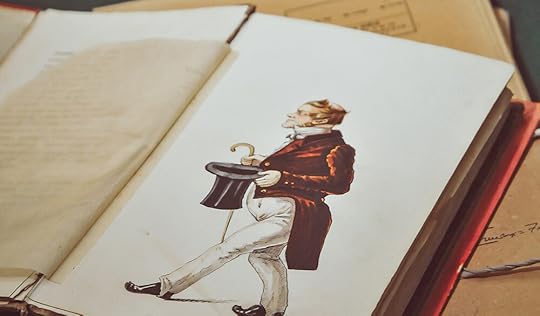 What is the history of the short story?
What is the history of the short story?Short-form storytelling can be traced back to ancient legends, mythology, folklore, and fables found in communities all over the world. Some of these stories existed in written form, but many were passed down through oral traditions. By the 14th century, the most well-known stories included One Thousand and One Nights (Middle Eastern folk tales by multiple authors, later known as Arabian Nights) and Canterbury Tales (by Geoffrey Chaucer).
It wasn’t until the early 19th century that short story collections by individual authors appeared more regularly in print. First, it was the publication of the Brothers Grimm fairy tales, then Edgar Allen Poe’s Gothic fiction, and eventually, stories by Anton Chekhov, who is often credited as a founder of the modern short story.
The popularity of short stories grew along with the surge of print magazines and journals. Newspaper and magazine editors began publishing stories as entertainment, creating a demand for short, plot-driven narratives with mass appeal. By the early 1900s, The Atlantic Monthly, The New Yorker, and Harper’s Magazine were paying good money for short stories that showed more literary techniques. That golden era of publishing gave rise to the short story as we know it today.
What are the different types of short stories?Short stories come in all kinds of categories: action, adventure, biography, comedy, crime, detective, drama, dystopia, fable, fantasy, history, horror, mystery, philosophy, politics, romance, satire, science fiction, supernatural, thriller, tragedy, and Western. Here are some popular types of short stories, literary styles, and authors associated with them:
Fable: A tale that provides a moral lesson, often using animals, mythical creatures, forces of nature, or inanimate objects to come to life (Brothers Grimm, Aesop)Flash fiction: A story between 5 to 2,000 words that lacks traditional plot structure or character development and is often characterized by a surprise or twist of fate (Lydia Davis)Mini saga: A type of micro-fiction using exactly 50 words (!) to tell a storyVignette: A descriptive scene or defining moment that does not contain a complete plot or narrative but reveals an important detail about a character or idea (Sandra Cisneros)Modernism: Experimenting with narrative form, style, and chronology (inner monologues, stream of consciousness) to capture the experience of an individual (James Joyce, Virginia Woolf)Postmodernism: Using fragmentation, paradox, or unreliable narrators to explore the relationship between the author, reader, and text (Donald Barthelme, Jorge Luis Borges)Magical realism: Combining realistic narrative or setting with elements of surrealism, dreams, or fantasy (Gabriel García Márquez)Minimalism: Writing characterized by brevity, straightforward language, and a lack of plot resolutions (Raymond Carver, Amy Hempel)”I don’t agree that the above list represents an inclusive list of ‘popular types of short stories’. The stories I write tend to be either plot or character driven. It is the length of the story (10 to 12 pages) which is challenging; there is only space for essential description, dialogue must be to the point, and action tends to be terse and clear. It is possible to inject tone through the language used by the narrator and the characters.
For me, the most important challenge is inventing new stories. I’ll need at least 25 stories, and at the moment, I’m only half way finished. I do rely on personal experiences, or stories which I’ve heard about which strike my fancy. On several occasions, I’ve started a story, realised that I wasn’t enthusiastic about it, and deleted it. The experience of writing a short story in quite intense compared to writing a novel.
August 5, 2023
Page One
In yesterday’s email, Harry Bingham , whose company, Jericho Writers, is running a First 500 Novel Competition, provided some feedback from his reading of the submissions. His comments all have to do with Page One, of course, which includes the first 500 words.
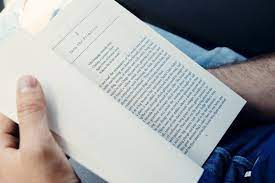 “This last week, I’ve spent quite a bit of time looking at your opening chunks. A few things struck me, including how amazingly common it is for people to have multiple time threads on their very first page. Normally, we think a book starts at time T0, then proceeds in a logical sequence to time T100. Contemporary readers are, of course, well used to more complex schemes – multiple time strands, some flashbacks, perhaps a flashforward in a prologue and so on. But the only real purpose of your first page is to get your reader into your story-train. Unless your reader has chosen to embark with you, nothing else can happen. And it’s just astonishing how many impediments we writers put in the way of readers climbing on board. One of the most common issues is that people insert multiple timelines into their first page. So one (otherwise perfectly capable) opening chunk ran like something this: Para 1: Very short para saying what happened at the end of the conference, let’s say Sunday evening. Para 2: Step back to summarise the weekend that had just elapsed. Para 3: Step back to the Friday drinks reception. Para 4: Step back again to what arrival had been like on Friday morning. Written out like that, it’s nuts – but as I say, multiple timelines on the first page are genuinely common. And each time you shift the time, the reader has to mentally relocate. (“Where are we now? We were on Sunday night, I think, but we’re surely now talking about the weekend generally. OK, so yes, we’re in a new place. Righty-ho. Let’s see if I can make sense of what’s happening now.”) Each of those relocations is a small mental challenge to the reader and each of those challenges makes it more likely that the reader’s going to think, “You know, there are other books out there which are going to make me work less for the same rewards.” Perplexing chronology is a common problem. A lot of same-sounding names and relationships all laid out on page 1 is also challenging. Ditto anything without a clear physical setting (such as for example, the reflections of a character about something you don’t properly understand.) Or prologues than run to literally no more than 2-3 paragraphs, before the book starts all over again. The key question to ask yourself is simply this: am I making it easy or hard for a reader to enter my book and get to grips with it? If you are writing high-end literary work (and I mean the sort of stuff that could win the Booker Prize), you have my permission to make things complicated. In all other cases, you have to seduce your reader. Make their life easy and rewarding. And talking of which … If it sounds like writing Elmore Leonard famously said, that ‘if it sounds like writing, I rewrite it.’ I got a deeper appreciation of what he meant when I read your opening chunks last week. Part of the problem, I think, is that we have a “
First 500
” Novel Competition and those competitions encourage a somewhat flashy response.
“This last week, I’ve spent quite a bit of time looking at your opening chunks. A few things struck me, including how amazingly common it is for people to have multiple time threads on their very first page. Normally, we think a book starts at time T0, then proceeds in a logical sequence to time T100. Contemporary readers are, of course, well used to more complex schemes – multiple time strands, some flashbacks, perhaps a flashforward in a prologue and so on. But the only real purpose of your first page is to get your reader into your story-train. Unless your reader has chosen to embark with you, nothing else can happen. And it’s just astonishing how many impediments we writers put in the way of readers climbing on board. One of the most common issues is that people insert multiple timelines into their first page. So one (otherwise perfectly capable) opening chunk ran like something this: Para 1: Very short para saying what happened at the end of the conference, let’s say Sunday evening. Para 2: Step back to summarise the weekend that had just elapsed. Para 3: Step back to the Friday drinks reception. Para 4: Step back again to what arrival had been like on Friday morning. Written out like that, it’s nuts – but as I say, multiple timelines on the first page are genuinely common. And each time you shift the time, the reader has to mentally relocate. (“Where are we now? We were on Sunday night, I think, but we’re surely now talking about the weekend generally. OK, so yes, we’re in a new place. Righty-ho. Let’s see if I can make sense of what’s happening now.”) Each of those relocations is a small mental challenge to the reader and each of those challenges makes it more likely that the reader’s going to think, “You know, there are other books out there which are going to make me work less for the same rewards.” Perplexing chronology is a common problem. A lot of same-sounding names and relationships all laid out on page 1 is also challenging. Ditto anything without a clear physical setting (such as for example, the reflections of a character about something you don’t properly understand.) Or prologues than run to literally no more than 2-3 paragraphs, before the book starts all over again. The key question to ask yourself is simply this: am I making it easy or hard for a reader to enter my book and get to grips with it? If you are writing high-end literary work (and I mean the sort of stuff that could win the Booker Prize), you have my permission to make things complicated. In all other cases, you have to seduce your reader. Make their life easy and rewarding. And talking of which … If it sounds like writing Elmore Leonard famously said, that ‘if it sounds like writing, I rewrite it.’ I got a deeper appreciation of what he meant when I read your opening chunks last week. Part of the problem, I think, is that we have a “
First 500
” Novel Competition and those competitions encourage a somewhat flashy response. For what it’s worth, I doubt if any of my books ever would have been seriously considered for a prize in a “first 500” type competition. My books just don’t choose to reveal much in the first page and a bit. Why would they? But the problem goes deeper. Writers are tempted to write flashily, to show off, to draw praise. And, OK, none of us mind a bit of praise – but, please, not at the expense of clarity. So lots of you wrote something that had this kind of tenor: They were only kids, yes, but kids who could run the universe. Jake could ride the lip of the slide and fly. Crash landings happened sometimes, but even the bruises were proof of something. Jonno had his bruises too, from similar antics. Blood brothers. The universe twins.
Yes, there’s some flashy writing going on there. But what the hell does it mean? How does the reader get on board with a story, when it’s simply unclear what’s happening? Here’s the same kind of thing, delivered in a way that makes sense: It was the hardest trick in the playground, but Jake had mastered it. Ride the skateboard down the raised metal lip that formed the edge of the slide, then fly three or four feet through the air before hitting the scuffed-up dirt at its foot. Jake was confident now, though he’d collected enough bruises over those summer months … [and so on]
You’re more likely to elicit applause with the first of those two chunks, but you’re a damn sight more likely to get readers with the second. So when you’re writing your opening chunk – whether for Feedback Friday, or the First 500 Novel Competition , or just because you want to write a saleable book – please don’t ask, “Does this sound like great writing?”. Ask: Is this clear? Am I obstructing the reader? Can the reader get easily onto my story-train? If it sounds like writing, you really might want to rewrite it.

